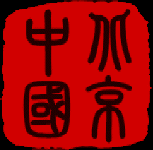 | TianAnMen Square | 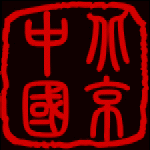 |
 | TianAnMen Square |  |
|
Introduction to TianAnMen Square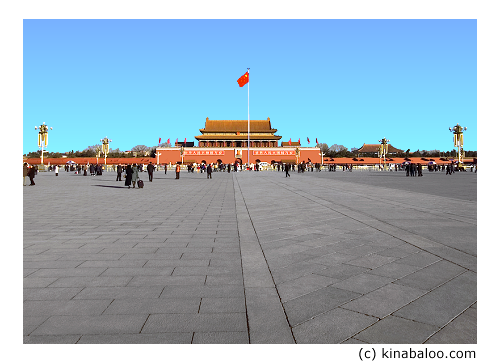 TianAnMen Square is a very large plaza at the center of Beijing, named after TianAnMen Gate ('Gate of Heavenly Peace') which sits to its north, separating it from, and connecting it to, the Forbidden City. The two red signs on TianAnMen Gate say : 'Long live the People's Republic of China' and 'Long live the great union of the peoples of the world'. TianAnMen Square has great cultural significance because it was on the rostrum of TianAnMen Gate that Mao ZeDong declared the People's Republic of China on October 1st 1949. That is why a large portrait of Mao hangs from the rostrum of TianAnMen Gate. TianAnMen Square is 880 metres from north to south and 500 metres from east to west, with a total area of 440,000 square meters (44 Hectares). It is the largest open square in the world - considerably larger than Red Square in Moscow. If you buy a ticket to go up onto the rostrum of TianAnMen Gate, you will have a good view of the square. 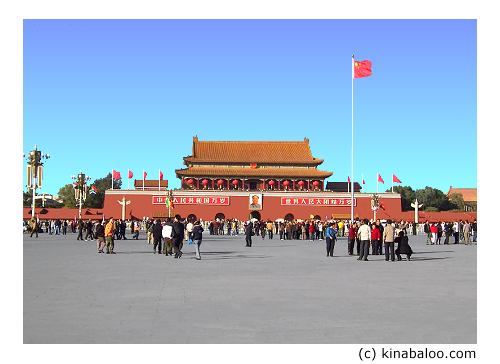 The large, white marble, ornamental columns around TianAnMen Gate were constructed in 1420 as part of the Forbidden City's grand design. There are two columns in front of TianAnMen Gate and two at the back. The columns are 9.6 meters high and weigh 20 tonnes each. On each column there is a plate called Cheng Lu Pan for collecting dew and a crouching animal called a Hou. The national flag is raised daily at sunrise and lowered at sunset. The procession for this comes through TianAnMen gate, which is closed behind the procession - so to see the flag raising/lowering, be on the square side of TianAnMen gate (or up on the rostrum). Below is a map showing the location of TianAnMen Square in relation to TianAnMen Gate, ChangAn avenue and the Forbidden City.
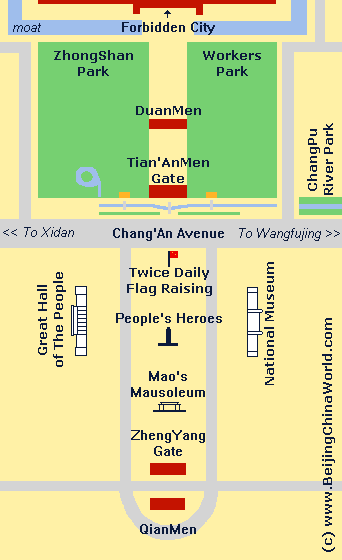 Within the square lies Chairman Mao's Mausoleum, which is popular with Chinese visitors. Just to the north sits the Monument to the People's Heroes; the words 'The people's heroes are immortal' are engraved here, in the handwriting of Chairman Mao. At the south of the square stands the 42 meter tall ZhengYangMen Gate, once part of imperial inner city wall and just beyond is the square is the 38 meter high Archery /Arrow Tower (JianLou). This area of Beijing is called QianMen (Front Gate). On the east side of the square sits the National Museum of China. In March 2011, it reopened after a four-year redevelopment. It is now the world's largest museum and holds over a million items. On the west side sits the Great Hall of te People. In March the National Congress is held here. At most other times it is possible to take a tour of the magnificent halls inside. If primarily visiting the Forbidden City, arrive at TianAnMen Dong subway station if coming by train; otherwise QianMen subway station at the south end of the square is an alternative starting point. The following map shows the layout of TianAnMen Square and the places around it. On the north side of the square, with entrances either side of TianAnMen Gate, are two parks, both of which are interesting. On the west side is ZhongShan Park, named after Sun Yat-Sen. On the east side is the Workers' Cultural Palace Park, which contains the Imperial Ancestral Temple (TaiMiao). To the south lies the pedestrianised QianMen Street, a shopping street in late Qing dynasty style. A short distance to the west lies the National Center for the Performing Arts (NCPA) - a huge titanium and glass dome that is well worth a look, even from just the outside. Further west lies the bustling shopping area of XiDan, and further to the east the equally lively WangFuJing shopping area. Video of TianAnMen Square |
Share this page
|
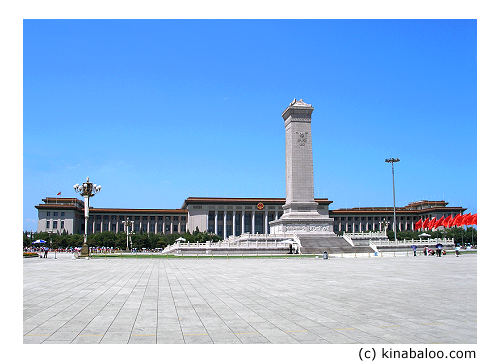
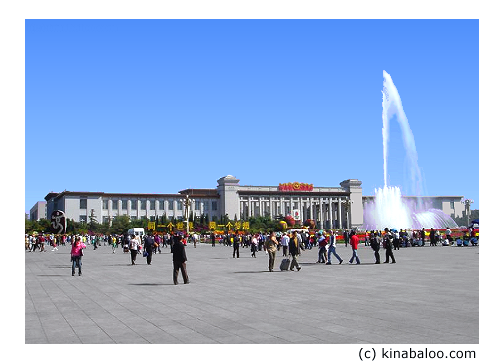
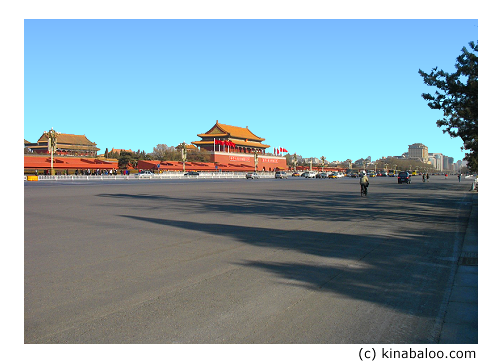
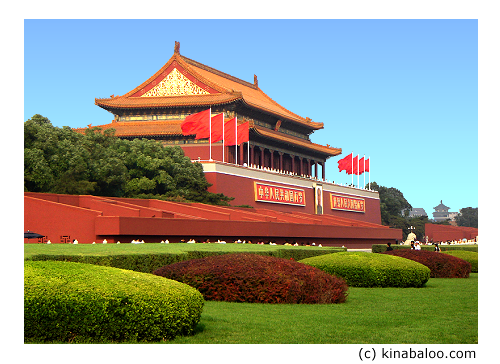
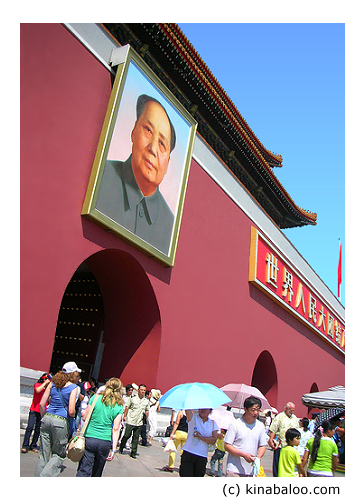
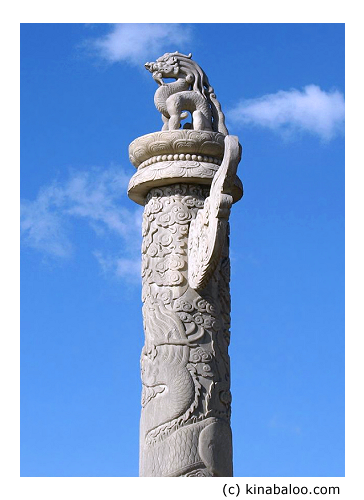
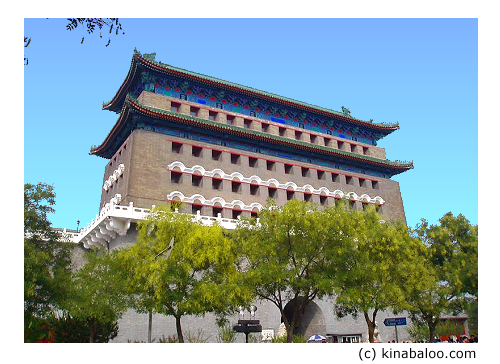
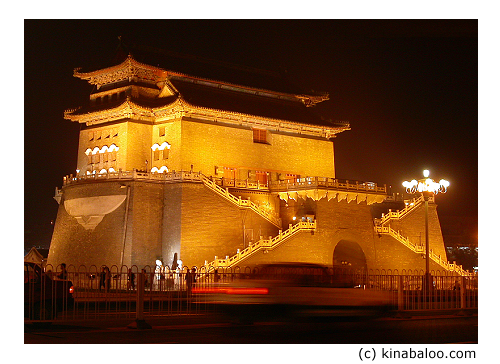
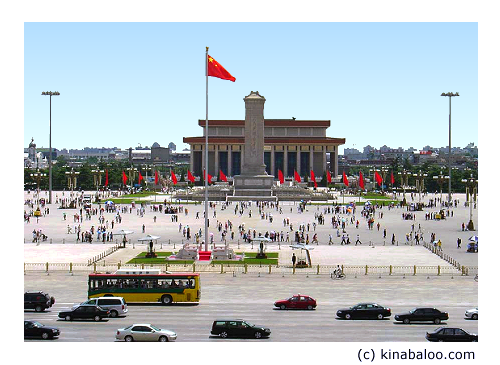
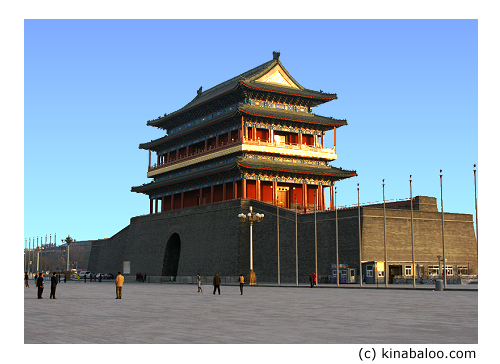
China Travel and Culture Videos Home